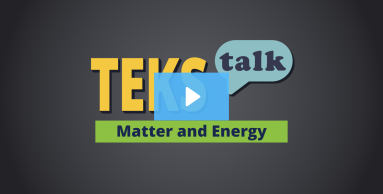
Knowledge and Skills Statement
The further explanation is designed to be a resource for educators that helps them better understand the topic their students are learning. Further explanations may be written at a more complex level than would be expected for students at the grade level.
The image below may be helpful when describing matter as made up of particles.
Research
Robertson, Bill. “Science 101.” Science and Children 46, no. 4 (December 2008): 56–59. http://www.jstor.org/stable/43175016.
Summary: This article explains what causes different states of matter. It explains how to build a model using craft store plastic balls and adhesive magnets to mimic how molecules behave in solids, liquids, and gases. Adding heat causes molecules to move faster and can cause matter to change into a gaseous state. Removing heat causes molecules to move slower, which can cause matter to change into a liquid and eventually a solid.
Research
Keeley, Page. “Formative Assessment Probes: Uncovering Representations of the Water Cycle.” Science and Children 55, no. 5 (January 2018): 18-19. http://www.jstor.org/stable/44709896.
Summary: Students should know that solids and liquids exist and how to tell them apart. Many students are taught that solids keep their shape and liquids take the shape of their container, but these descriptions can cause misconceptions. Students often believe that solids are hard and cannot be soft. In this article, the teacher has students determine if an object is a solid or a liquid using its properties. Students make their claims about whether an object is solid and defend their claims using evidence. The other students do not give their opinion at first but just listen. Teachers listen for misunderstandings (such as flour being called a liquid because it is soft and pourable). These claims can be added to a chart for the class to discuss. Students should then be allowed to observe things like flour to see that it is a material made up of many small solids. The teacher can then use the claims chart to assess student understanding. It was obvious that most of the misconceptions were about soft, flexible, and stretchy solids.

